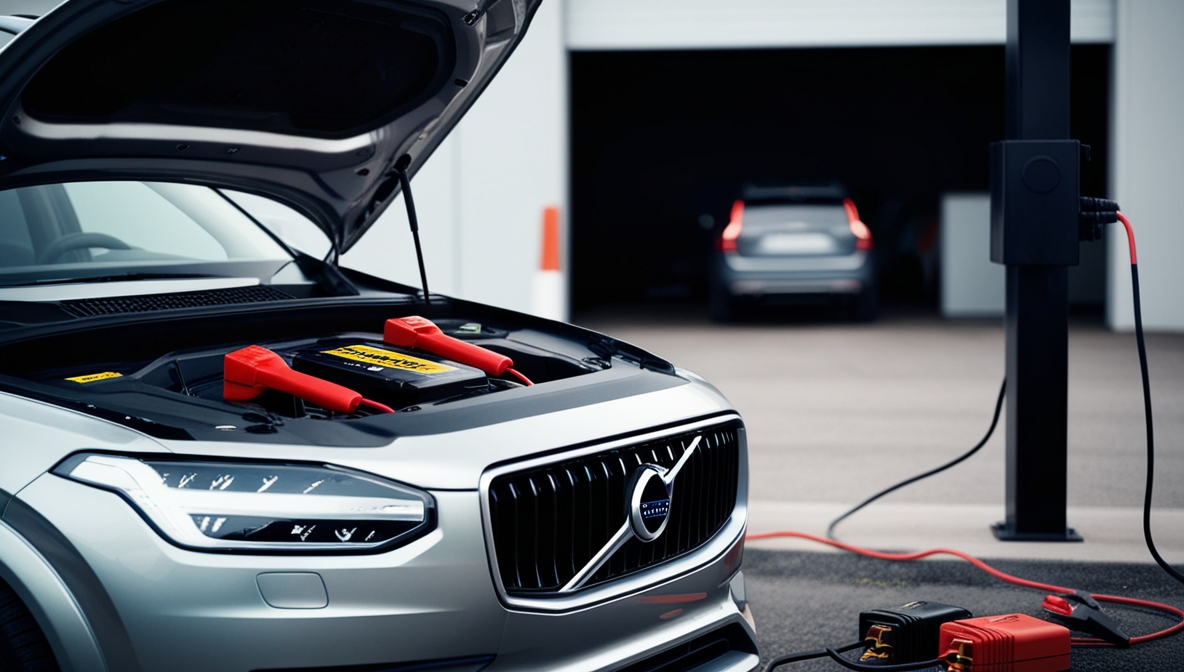How to Force Regen on Volvo D13 Engine for Optimal Performance.
Ever been stuck on the side of the road, your Volvo truck refusing to budge an inch? Trust me, I’ve been there, and it’s no picnic. But fear not, fellow road warriors! Today, we’re diving into the nitty-gritty of forced regeneration on Volvo D13 engines. Buckle up because this ride’s about to get technical (but don’t worry, I’ll keep it as smooth as a freshly paved highway).
So, what’s the deal with forced regen? Well, it’s like giving your engine a spa day, but instead of cucumbers on its eyes, we’re clearing out all the gunk from its Diesel Particulate Filter (DPF). This process is crucial for keeping your Volvo D13 running smoothly and avoiding those dreaded roadside breakdowns. Let’s roll up our sleeves and get into it!
Understanding DPF Regeneration on Volvo D13 Engines
What is Diesel Particulate Filter (DPF) Regeneration?
Picture this: your DPF is like a vacuum cleaner bag for your engine. It traps all the nasty soot and particles that would otherwise pollute the air. But just like any vacuum bag, it needs emptying now and then. That’s where regeneration comes in.
There are three types of regeneration: passive, active, and forced. Passive regen happens naturally during normal driving. Active regen kicks in automatically when the DPF gets a bit too full. But sometimes, your engine needs a little extra help – that’s where forced regen comes into play.
Why and When Should You Perform a Forced Regen?
Remember that time your mom told you to clean your room, and you ignored her until it was practically a disaster zone? Well, your Volvo D13 has its way of telling you it’s time for a clean-up. Watch out for these signs:
- The DPF warning light on your dashboard starts flashing like a disco ball.
- Your engine suddenly feels as sluggish as you do on a Monday morning.
- Your fuel consumption skyrockets faster than a teenager’s phone bill.
If you see fault codes like SPN 4094 FMI 1 popping up, it’s your engine’s way of saying, “Hey buddy, I need a forced regen to reset these pesky NOx sensors and emissions systems!” Ignore these signs at your peril – unless you fancy an impromptu roadside camping trip.
Step-by-Step Guide to Forcing a Regen on Volvo D13
Step 1 – Prepare the Environment for a Safe Regen
First things first, let’s set the stage for our regen performance. Find a spot that’s more open than your average truck stop buffet. We’re talking outdoors or in a well-ventilated area. Why? Because this process gets hotter than a summer day in Death Valley, we don’t want accidental BBQs.
Step 2 – Verify Operating Temperatures
Now, let’s talk temperature. Your coolant should be lounging comfortably between 160°F to 190°F (71°C to 88°C). Think of it as the Goldilocks zone – not too hot or cold, but just right for a perfect regen.
Step 3 – Connect a Diagnostic Tool
Time to plug in. Grab your Volvo Vocom, OTR Reset Tool, or whatever compatible gadget you’ve got. It’s like hooking up your smartphone, but instead of scrolling through memes, you’re about to give your engine a digital detox.
Step 4 – Start the Forced Regeneration Process
Navigate through your tool’s interface like you’re searching for the best route on your GPS. Find that regen command – it’s your golden ticket. Follow the on-screen instructions carefully. One wrong move, and you might end up in the digital equivalent of taking a wrong turn in Los Angeles during rush hour.
Step 5 – Monitor the Process
Sit back, relax, and watch the magic happen. This show usually runs for about 20-30 minutes. Whatever you do, don’t hit pause halfway through. Interrupting a regen is like stopping a sneeze – it’s uncomfortable and potentially damaging.
Equipment and Tools Required for a Forced Regen
Recommended Diagnostic Tools for Volvo D13 Engines
You’ve got options here. Volvo Vocom is like the name-brand cereal of diagnostic tools – reliable but pricey. OTR Reset Tools are more like the generic brand – they’ll get the job done and leave some cash in your pocket. If you’re not feeling handy, professional services can do it for you, but be prepared to shell out anywhere from $300 to $700.
Performing DIY Regen with OTR Performance Products
For the DIY enthusiasts out there, OTR tools are your best friend. They’re mobile-friendly (perfect for those on-the-go fixes), quick to reset issues and watch those pesky fault codes. It’s like having a mini-mechanic in your pocket!
Troubleshooting Common Regen Issues on Volvo D13
Why Does Forced Regen Fail?
Sometimes, things don’t go as smoothly as we’d like. Your regen might fail if the exhaust temperature is off, the sensors are clogged, or the process gets interrupted. It’s like trying to nap at a truck stop – sometimes, external factors don’t cooperate.
Solutions for Failed Regen Attempts
If you don’t succeed at first, try again – but maybe with a different approach. Try resetting the after-treatment systems and replacing sensors, or if all else fails, wave the white flag and consult a Volvo service center. Sometimes, you need to call in the cavalry.
Maintenance Tips to Avoid Forced Regen
Frequency of Regeneration for Volvo D13 Engines
Ideally, you want to do this dance every 200-300 hours of engine use. Think of it as a regular oil change but for your DPF. Stay on top of this; your engine will thank you by not leaving you stranded in the middle of nowhere.
Preventive Measures for Efficient Engine Performance
Keep those sensors and filters clean – they’re the unsung heroes of your engine. And for the love of all things diesel, use high-quality fuel. It’s like feeding your engine a healthy diet instead of junk food. Your DPF will build up less soot, and you’ll spend less time scratching your head on the side of the road.
Frequently Asked Questions (FAQ) about Volvo D13 Forced Regen
Can Forced Regen Clear All Fault Codes?
Wouldn’t that be nice? Unfortunately, some fault codes are stubborn little buggers that require additional repairs. Forced regen isn’t a cure-all, but it is a great place to start.
What Happens If You Ignore DPF Warnings?
Ignore them at your own risk! Your engine might start running slower than molasses in January, guzzle fuel like it’s going out of style, and you might even find yourself on the wrong side of emissions regulations. Trust me, that’s a road you don’t want to go down.
How to Know If Your Regen Was Successful?
If your engine starts purring like a kitten and those fault codes disappear faster than free donuts at a truck stop, congratulations! You’ve completed a regen. Your emissions data should be clearer than a cloudless sky, and your engine performance should return to its glory days.
And there you have it, folks! A complete guide to forcing regen on your Volvo D13 engine. Remember, a little maintenance goes a long way in keeping your rig on the road and out of the shop. Now, go forth and conquer those highways – your newly regenerated engine is ready for the challenge!







